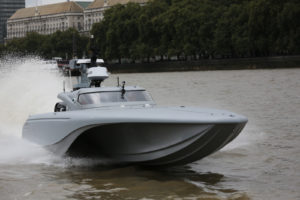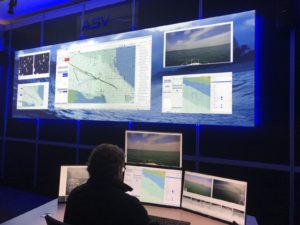Autonomous shipping has become a topic of discussion over the past year with large industry players stating their interest in developing this technology.
The Three Vital Elements That Will Make Autonomous Shipping a Reality
Contributed by | ASV Global
London’s International Shipping Week brings together organisations from all over the international shipping industry - regulators, charterers, ship owners, ship brokers, insurers, port operators and many more.
To celebrate the occasion ASV Global, the world leading developer of autonomous vessel technology, explores what it’ll take to make autonomous shipping a reality. Autonomous shipping has become a topic of discussion over the past year with large industry players stating their interest in developing this technology. ASV Global has deployed its technology onto more than 80 small vessels (<15m) but believes that this technology is indeed scalable. According to the company’s expert autonomous systems developers, there are only 3 key elements that hold the key to bringing autonomous shipping into the now.

As the marine industry adopts maritime autonomous systems (MAS) across different sectors including oil and gas, science and survey, military and security domains, it seems only logical that the next step is to revolutionise the landscape of ship design and operations through autonomous shipping.
A ship’s ability to monitor its own health, recognise what is around it and make decisions based on that information is vital to the development of autonomous operations, and ASV Global has the technology to do this.
 In 2016 The Ministry of Defence signed a licence agreement with ASV for the use of its Unmanned Surface Vehicle (USV) advanced autonomy technology. The contract was signed through Ploughshare Innovations, the technology transfer arm of the Defence Science and Technology Laboratory (Dstl).
In 2016 The Ministry of Defence signed a licence agreement with ASV for the use of its Unmanned Surface Vehicle (USV) advanced autonomy technology. The contract was signed through Ploughshare Innovations, the technology transfer arm of the Defence Science and Technology Laboratory (Dstl).
Working with Dstl since 2013, ASV has developed an autonomous navigation system that enables USVs to operate safely at low and high speeds. The vessel used for all testing to date (and designated as Dstl’s Maritime Autonomy Surface Testbed, or MAST) is a converted Ice Marine “Bladerunner 34”, a 10m powerboat capable of speeds in excess of 60 knots. While the nature of the vessel has allowed ASV to develop autonomous behaviours for a small, fast boat, the next natural step is to scale the system up for use with larger vessels.
The success of this kind of system depends on three key parts: sensor fusion, control algorithms and communications.
Sensor technology is well developed and can be found in many forms of autonomous vehicle operation, most notably road vehicles where competing developers have prioritised differing technologies. ASV’s advanced autonomy project has explored the integration of radar, AIS, GPS and 360-degree daylight and thermal cameras with deep-learning vessel classification and sea state detection to provide the vessel and its remote operators with an accurate perspective of its environment and surroundings at all times and in all conditions.
The development of navigation and collision avoidance software algorithms allow the system to react to other marine traffic in accordance with internationally recognised maritime rules and regulations, with the autonomous vessel behaving entirely as would be expected from a standard manned boat.
Despite the significant advances made in technology development, autonomous vessels are still somewhat reliant upon human input from land or a local remote station. As such, connectivity between the remote operator and the vessel is of paramount importance. Communications links over increasingly large distances need to be accurate, scalable and supported by multiple links to create redundancy and minimise risk. Sufficient reliability and bandwidth capacity for sensor monitoring has to be consistently proven in order to be fully adopted into the wider market.
Future development of ASV’s advanced autonomy project will explore how to combine existing communication technologies in an optimum way for autonomous ship control. This will include significantly developing over-the-horizon capabilities in order to conduct more and operations akin to a recent survey project undertaken with our C-Enduro vehicle, which was operated off the coast of Scotland from ASV’s Mission Control Centre in Portchester via a satellite link over 12 continuous days and nights
The future goal is to integrate the advanced autonomy system into bridge systems on shipping vessels, with upcoming work to experiment with a proof of concept bridge aid which is to be tested on a passenger ferry.
The content & opinions in this article are the author’s and do not necessarily represent the views of RoboticsTomorrow
Comments (0)
This post does not have any comments. Be the first to leave a comment below.
Featured Product

